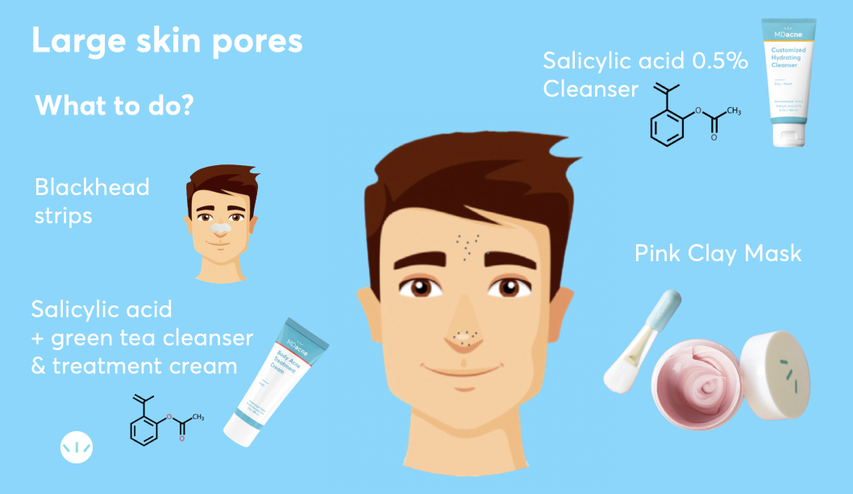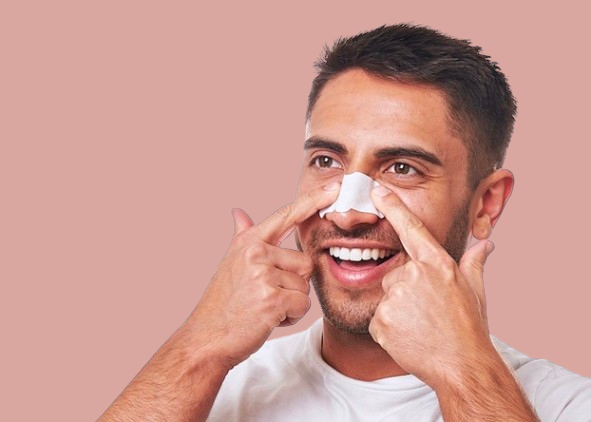How to get rid of large pores?
Understanding Skin Pores and How to Minimize Their Appearance
What are Skin Pores?
Our skin has two types of pores: oil pores and sweat pores. The visible pores we often notice are the oil glands' enlarged openings attached to hair follicles. These sebaceous glands produce sebum, a natural oil. Sweat pores, however, are nearly invisible and unrelated to hair follicles; they’re responsible for releasing sweat to regulate body temperature and typically don’t affect skin appearance.
With approximately 5 million oil pores on an adult's body—20,000 on the face alone—pore size varies by skin type. Oily skin types tend to have more prominent pores, while dry skin types usually have smaller pores. Aging and sun exposure can enlarge pores over time. Blackheads and whiteheads form when oil and dead skin clog pores, which can lead to acne if bacteria and inflammation are involved.
Factors That Influence Pore Appearance
- Sebum Oxidation: Blackheads form as trapped sebum oxidizes, causing visible dark spots. Without proper care, blackheads can stretch and enlarge pores.
- Hormones: Hormonal changes, especially during the menstrual cycle, pregnancy, or menopause, can make pores appear larger and trigger breakouts.
- Aging: Reduced collagen production and loss of skin elasticity with age can make pores appear more prominent.

Tips for Reducing Pore Appearance
While you can’t physically shrink pores, you can make them appear smaller with proper skincare. Here’s how:
-
Use the Right Skincare
Choose oil-free, non-comedogenic products to prevent clogging. Cleanse with a medicated, hydrating cleanser twice daily, using lukewarm water. Massage gently to cleanse thoroughly and avoid irritation. Follow with a gentle exfoliator three times weekly to clear away dead skin cells. -
Moisturize Properly
Moisturizing is essential, even for oily skin types. Opt for a light, water-based moisturizer with niacinamide, which supports the skin barrier, reduces irritation, and minimizes redness, helping pores appear less noticeable. -
Try a Clarifying Clay Mask
Clay masks, especially those with pink clay, are excellent for absorbing oil and drawing out impurities from pores. They can be used 1–2 times a week, but to prevent irritation, avoid using them on the same days as exfoliating. -
Wear Sunscreen Daily
Sun exposure damages the skin and can make pores appear larger over time. Using a broad-spectrum sunscreen with SPF 30 or higher will protect your skin, preserving its firmness and minimizing pore visibility. -
Consider Blackhead Strips
Blackhead strips provide an instant fix by lifting dirt and oil from pores. Follow with a salicylic acid cleanser or retinol to keep pores clear and prevent future blackheads. MDacne’s plant-based blackhead strips are gentle and effective. -
Stay Hydrated
Drinking enough water (around eight glasses a day) helps maintain skin hydration, flush out toxins, and support overall skin health, making pores appear less prominent.
In-Office Treatments for Enlarged Pores
Professional treatments like micro-needling with radiofrequency can help increase collagen, making skin appear firmer and pores smaller. Increased collagen production helps create a denser skin structure, effectively tightening pores over time.
With these strategies, you can achieve a smoother, refined complexion and maintain healthier-looking skin.
References
- Facial skin pores: a multiethnic study
- How Much Do We Really Know About Our Favorite Cosmeceutical Ingredients?
To find the right acne treatments for your unique skin, take the free skin assessment by clicking here.




